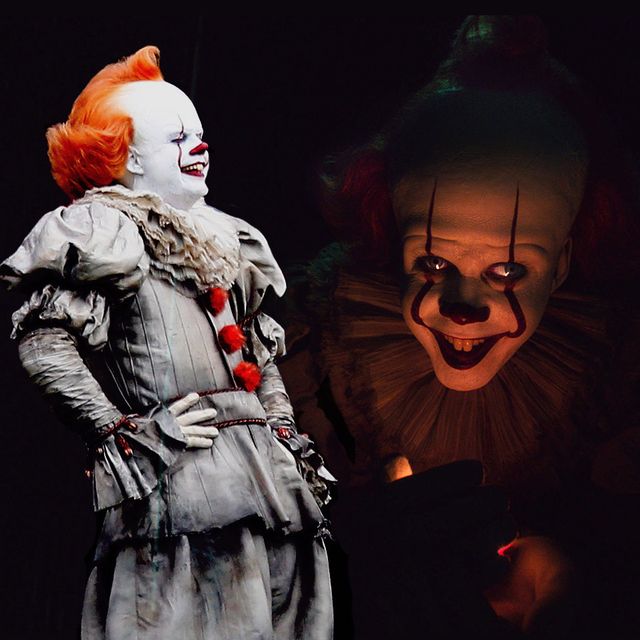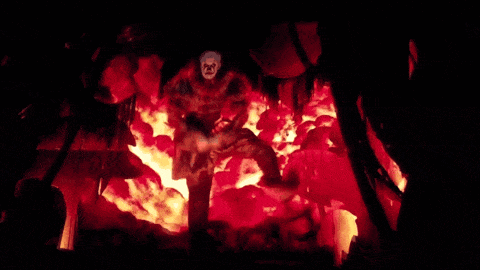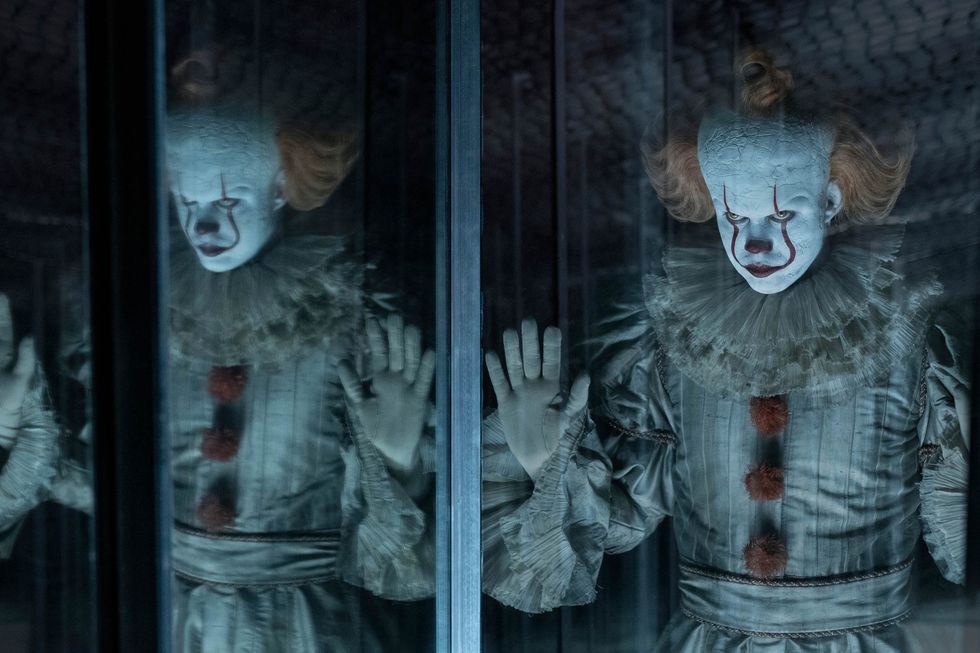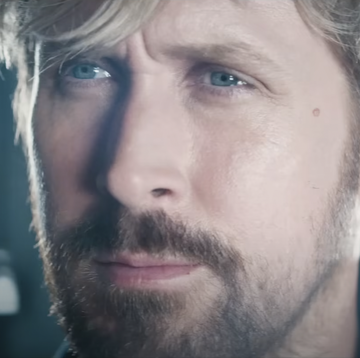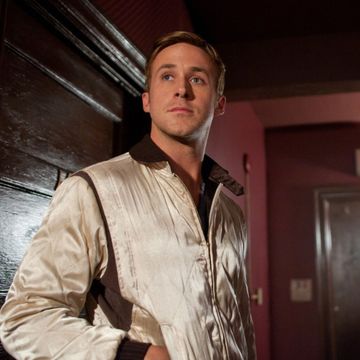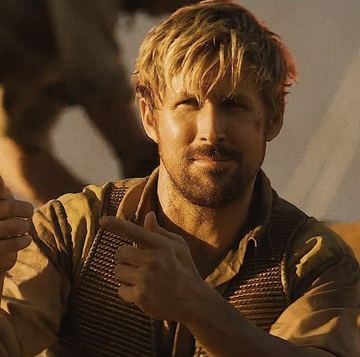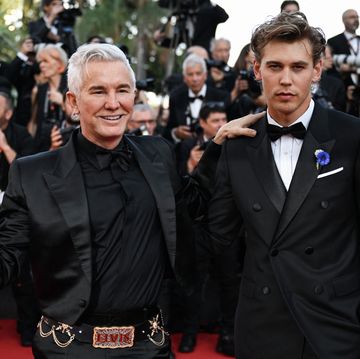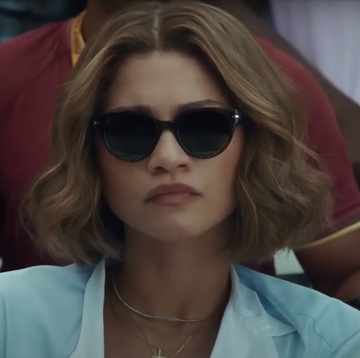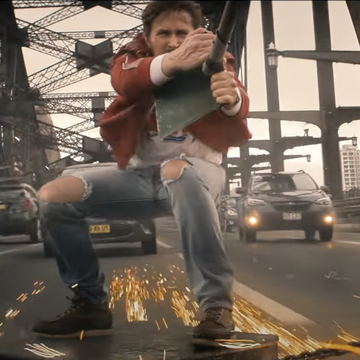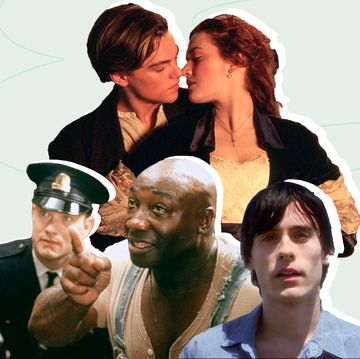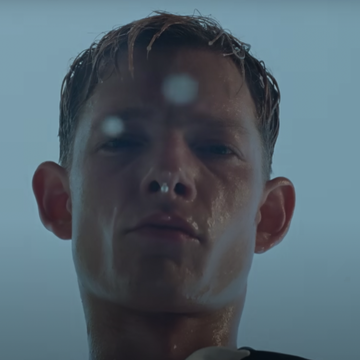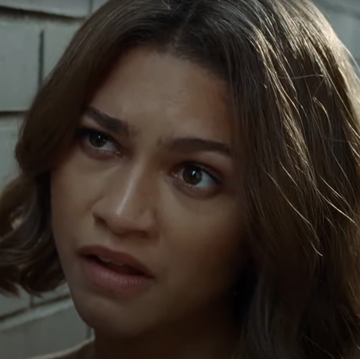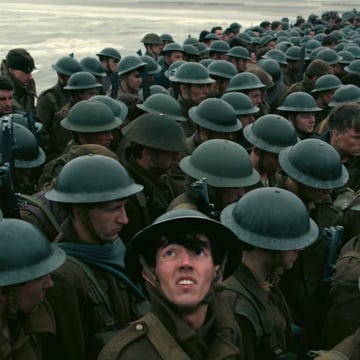Pennywise the Dancing Clown does a lot of bad things in It Chapter 2. It eats children. It buries people alive. It even turns a puppy into a spooky demon hellspawn. The clown is by no means a good role model for upcoming clowns and comedians. But, personal politics aside, although It may be a terrible ancient cosmic sewer wraith, you have got to admit, Pennywise is a legitimately funny clown. Approached from the shapeshifter's perspective, It Chapter 2 is just about a lonely, misunderstood little circus performer who loves to goof around—an unpredictable and searing insult comic with impeccable timing and a knack for impressions.
Like Rodney Dangerfield in Caddyshack, It Chapter 2 is, at its essence, a Pennywise vehicle. Just as Dangerfield lights up the screen whenever he appears in the famous 1980 golfing comedy, this Dancing Clown is the absurdist outsider disrupting the normality of this small Maine town. It goes around town punking its subjects like Ashton Kutcher with a lust for blood. It is a sketch comedy master—one who is constantly placing victims into weirdo improv situations that just so happen to end in death. And when It inhabits a giant Paul Bunyan statue in front of a horrified Bill Hader, this might as well have been pulled directly from an episode of SNL.
As a physical performer, Pennywise is hands-down one of the best, delivering a performance that is up there with Jim Carrey in Ace Ventura or even Charlie Chaplin in Modern Times. Just look at the way It distorts its face—eyes crossing in both directions, tongue lolling out, drooling, and giggling. It can shapeshift, so, unlike the mainstream legends of screen comedy, Pennywise's impressions aren't limited by a physical form. This makes for a comedic presence that is both unpredictable and unique. We see Pennywise act as a dancing, naked old lady. We see It as a vomiting leper in the basement of a pharmacy. It even becomes a cute little Pomeranian, who first appears to be nice and good, until it transforms into a repulsive evil dog beast. All comedians know that, to work in comedy, you've got to be funny in any room, in any situation. This is the kind of golden-age Three Stooges dedication you just don't see anymore.
As in classic silent comedy tradition, It Chapter Two is based around a series of sight gags. The supporting cast's search for MacGuffin totems simply acts as a vehicle for Mr. P to go to work. In one scene we see It set up a classic comedy scenario, giving two characters three doors to choose from: One that says "Not Scary," one that says "Very Scary," one that says "Scary." What will they choose!? It's a fantastic farce set-piece that has the long-term pay-off of the aforementioned puppy punchline. This demonic clown's love of fun and frivolity is fully contagious, as I felt myself laughing along in glee anytime Pennywise began to play. The clown even succeeds as an insult comic, riffing on the main characters any chance it gets. It's reasons like this that convince me that Stephen King's entire It franchise is actually about a sad comedian who just wants an excuse to perform. Why else would Pennywise keep the main cast alive throughout the entirety of both films? The clown wants its jokes–not its scares–to kill.
The film's funniest moment comes when Pennywise shows up in a spooky hall of mirrors. It unfurls its gigantic tongue, and licks the glass, totally deadpan. When the characters spot the clown, they scream, and then Pennywise begins to smash its face onto the glass mirror. Alan Alda famously said in Hannah and Her Sisters, "If it bends, it's funny. If it breaks, it's not funny." That's exactly what makes this scene so hilarious, as Pennywise continually throws his head into the mirror, over and over, with us as the audience anticipating the glass breaking. But in classic comic fashion, the glass just will not break! Mr. P perseveres, because, like any great raconteur, it will stop at nothing to deliver a punchline–even if it means breaking its own face on a glass wall!
It Chapter Two is somewhat nonsensical when taken as a horror film. The seemingly limitless power of the movie's central monster makes for a confusing experience, where you're constantly asking, what, really, does Pennywise even do? Like, what does it want? To me, there's no real reason why this clown would keep so many people alive, especially if it has the power to become literally anything, and it seems to satiate itself by eating humans. But from a comic's perspective, there's no fun if the audience is dead. The clown needs a crowd, because it simply cannot resist the urge to have fun.
